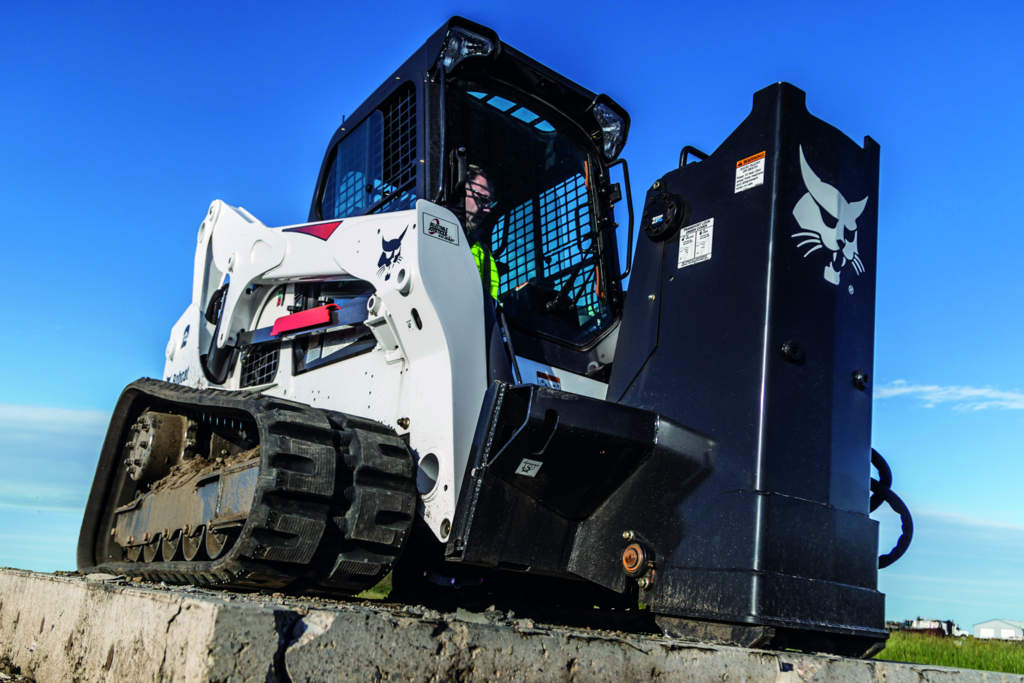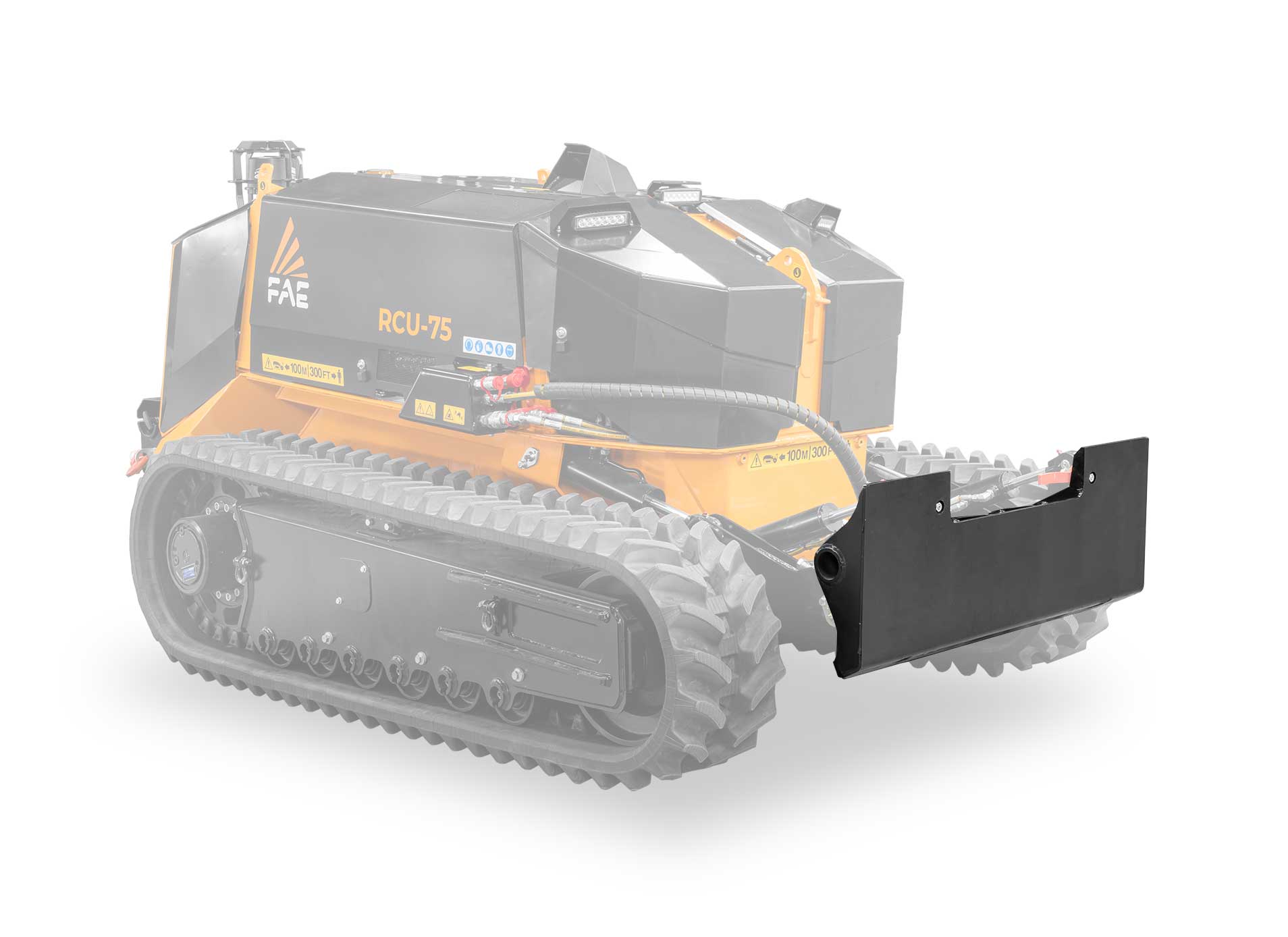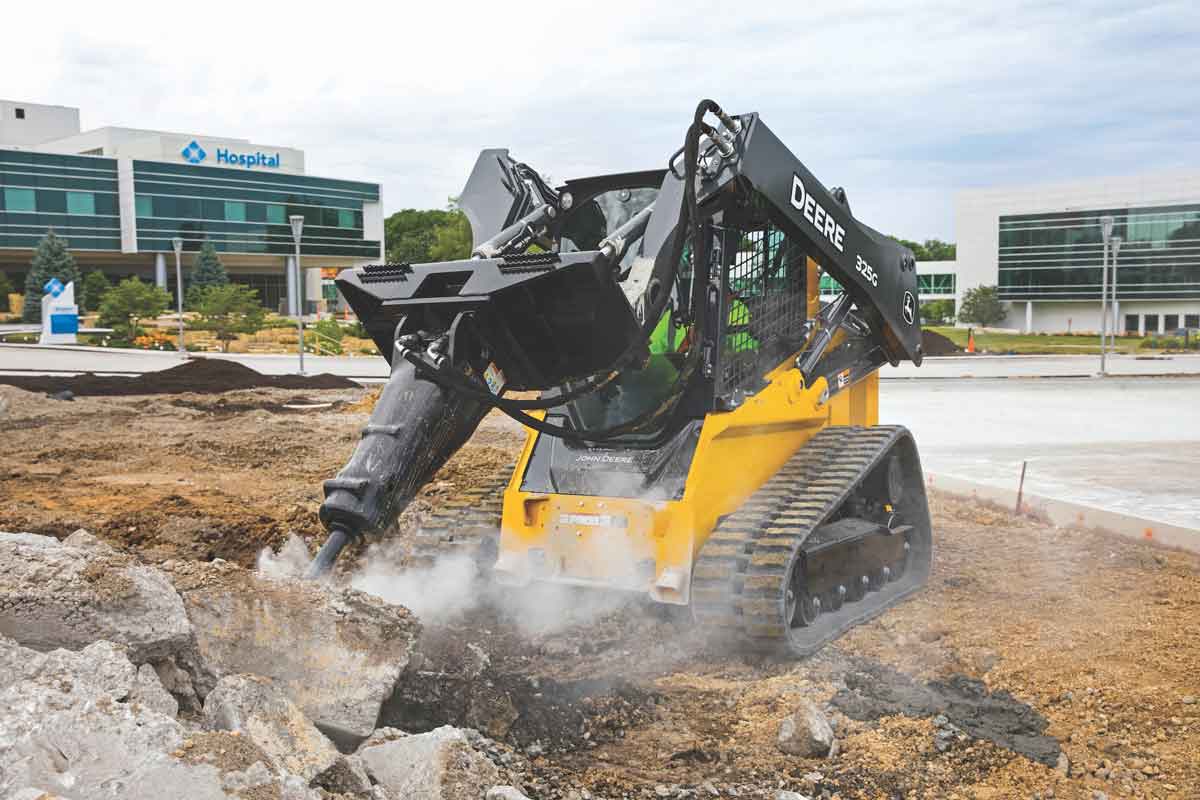Mow Right: Rotary? Finish? Mid-Mount? Choose the Right Mower for Your Utility Tractor

Mowers are one of the two most popular attachments for utility tractors up to 60 PTO horsepower (the other being front loader buckets). You may think, “So I need to choose a mower. How hard can it be?” The answer is likely harder than you imagine. There are many options and many resultant outcomes. Here’s how to select the right mower for the outcome you desire.
Define the Site
Area is the first consideration. Mowers for utility tractors are available for areas bigger than you’d want to mow with a riding mower up to 5 acres. The site definition also includes soil type (rocky, loamy, sandy, etc.), vegetation type (coarse or fine, turf or weeds), flat vs. undulating vs. hilly vs. smooth vs. rough vs. dry vs. wet. Are you mowing around obstructions such as buildings, fences or ponds? Cross-slope travel is dangerous, and slopes should be traversed up and down. Do you have room at the top and bottom of slopes to turn around?
Define the Finish
Do you want a groomed appearance or are you just trying to control brush and weeds in an area? Think of a lawn compared to a pasture. Any mower will cut either, but the finishes will vary widely. Finish mowers commonly have cutting heights of 1.5 to 4 or 5 in. Other mower types may extend the maximum height to 9 or more in.
Define the User

Lawn care professionals will run their mowers eight or more hours a day, five or six days a week, for six or more months a year. Rural lifestyle customers will mow a few acres once a week for several months. The pro’s mower may accrue 2,500 hours of use in a year while the individual’s mower may barely break 100 hours.
“Most customers with tractors of 60 hp and less are buying tractors to make their lives easier,” says Todd DeBock, North America marketing manager, New Holland. “They’re not trying to make money with their tractors or their mowers.” DeBock also notes that many individuals are well served with tractors of 25 or 30 hp: “Those tractors will handle quite a bit of acreage.”
Municipalities will have hourly employees running the mowers but will also want tractors suitable for other applications to increase utilization rates. Assess your relationship with your dealer and the dealer’s ability to provide parts and service. And finally, what about comfort? Do you need a cab? If so, one with heat and air conditioning? AC is a heavy parasitic load. Make sure your tractor has the power to run the mower you choose at the same time as it’s running the AC. If you’d be happy with open ROPS (roll-over protection), can it be fixed in place or will it need to tilt down to navigate some locations or enter the barn?
Mid-Mount (“Belly”) Mowers

These are mostly finish mowers, designed to give a smooth, consistent finish to turf. Whereas rear-mount mowers using a three-point hitch are standardized, mid-mount mowers are proprietary. PTO shaft lengths vary, as do the mounting points. It’s best to get the mower and tractor of the same manufacturer to ensure compatibility.
The mounting process is a differentiator. Some smaller decks can slide in from the side. Larger decks are mostly drive-over; the deck is situated in front of the tractor and the operator drives up-and-over on purpose-built ramps configured as part of the deck. In practice this is less of a consideration than it first appears. “Most customers leave their deck in place all the time,” says DeBock. “Some will remove it after the mowing season if they use the same tractor for snow removal.”
Mid-mount mowers track the ground better than rear-mount mowers, says Eddie Hall, sales administrator at the Yanmar EVO Center in Acworth, Georgia, about 30 miles north-northwest of Atlanta. “Because of this, they give a better finished appearance.” Mid-mount mowers also reduce storage space when the tractor is parked.
Rear-Mount Mowers

Rear-mount mowers mount on a three-point hitch of category 0 (to 20 hp), category 1 (20 to 45 hp) or category 2 (40 to 100 hp). Higher horsepower categories also exist. There is a “limited” category 1 with a reduced range of movement. It’s important to match the mower with the category as bolt sizes and other factors dictate compatibility. Using a mower that’s underrated for the tractor can result in destruction of the mower’s gearbox by the tractor’s excessive horsepower. Some manufacturers offer a proprietary quick-mount system that simplifies mounting and removal of mowers with that same quick-mount design.
Finish mowers are available as rear-mount, but many customers opt for a rotary-style rear-mount mower. These are better for rougher conditions. “Because they’re designed for rougher conditions, they tend to be more sensitive to horsepower,” says Hall.
And because they’re designed for rougher conditions, rotary-style mowers have features to minimize damage when encountering rocks or other obstacles. Darin Gronwold, senior product specialist, Ignite Attachments, says their mowers use a shear bolt on the PTO shaft for this purpose. “Some designs use a slip clutch, but that can add $1,000 to the cost of the mower. Since ours are in the $1,700 to $2,200 range, that $1,000 is a significant percentage of increase so we use the shear bolt design.”
Gronwold also advocates for the use of OEM replacement blades when the time comes. Their blades mount to a spinning drive disc and have a free-swinging design as a first defense against impact with obstructions. The blades also have contours designed to maximize lift with Ignite decks to provide an even cut.
Gronwold says Ignite is adding a sickle-bar mower to its catalog. It’s still a three-point mount but is offset and provides better access up to edges, around ponds and under obstructions such as fences. The resulting clippings can be bailed for feed or used in silt control. Raising the heel of the sickle bar (the part nearest the tractor) and angling the bar further improves access. For tractors with a float feature on their hydraulics, the sickle bar can be set to follow the contour of the area being cut.
Boom-mounted mowers provide access on embankments, in roadside ditches and over guardrails. They can also be used for trimming back trees around the roadside right-of-way. Boom-mounted mowers require the use of a counterweight.
Too Much Technology?

Your search for a mower may lead to a search for a tractor and that may lead to a bit of shock when you see the level of technology now available. As the cost of technology comes down over time, it becomes cost-effective to add tech to lower-cost tractors. But customers can have concerns that technology adds unneeded complexity and additional failure modes. So how much tech is too much?
“Understand what technologies are available and decide which add value to your operation,” says DeBock. Telematics, for example, track usage rates and locations, can identify operators, flag unauthorized use, help with maintenance and repair schedules and provide a host of other benefits. Telematics offer substantial value to the commercial customer but for the private owner, not so much, if any at all.
Maintenance Maximizes Mower Life

Mowers aren’t ghastly expensive. The median price point is in the $2,500 to $3,000 range. Even so, customers want to get the maximum life from their investment. The first step is to make sure the mower is suited to the conditions. Some have a stump-jumper feature to help ease the mower over stumps, rocks and other obstacles if you’re mowing fields or other unimproved properties.
“But the number one thing is to keep it clean,” says Hall. “Most owners know to clean out the underside of the deck, especially if they’re often mowing damp vegetation, but keeping the upper side clean is equally important.” He also emphasizes the importance of adhering to service guidelines for greasing, checking the condition of the belts, checking gearbox fluid levels and changing gearbox oil.
Richard Ries is a freelance writer for Compact Equipment.
Fecon Acquires Stumper Industries

Fecon recently acquired Stumper Industries, a manufacturer of stump grinder attachments for mini and standard skid steers and compact track loaders, excavators and tractor applications. The acquisition expands the landscaping and land maintenance solutions Fecon offers in the forestry mulching and vegetation management industries. The Stumper by Fecon series features five quick-attach models compatible with compact to heavy-duty machinery. The attachments range from 22- to 36-in. cutting diameters with up to 12-in. cut depths per pass to tackle everything from small jobs to large, stubborn stumps and roots. The stump grinders’ performance also balances safety with efficiency due to the combination of their low-rpm processing and heavy-duty chip deflectors that reduce the debris field for safe operation. For more info, visit fecon.com.




